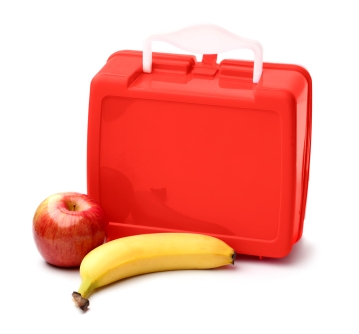 The transition back to school is fast approaching and while kids may be wondering whether or not their Captain America lunchbox is still cool, parents are thinking about what should go in it.
The transition back to school is fast approaching and while kids may be wondering whether or not their Captain America lunchbox is still cool, parents are thinking about what should go in it.
Celia Framson, MPH, RD, CD, a clinical pediatric dietitian at Seattle Children’s Hospital, says parents shouldn’t panic about packing the perfect lunch for their child. Instead, they should involve kids in the packing process and focus on providing a balanced meal that meets a child’s taste preferences and nutritional needs. Parents should also model healthy behaviors that their kids can learn from so they can adopt healthy habits that will last a lifetime.
Being a nutritional role model at home translates to the lunchroom
“I encourage parents not to talk about foods as either ’good’ or ’bad,’” says Framson. Instead, set an example of healthy eating in the home, including offering foods from a variety of food groups, eating regularly throughout the day and including treat foods occasionally as part of a balanced diet.
When children are young, parents are the primary decision makers when it comes to food, helping guide choices in the home and in the community. Teach children to have a healthy relationship with food.
Try not to skip meals or discuss the perceived negative consequences of eating. Also try not to engage in “fat talk” by making comments about how food makes you fat. Model eating well-rounded, nutritious meals, including fun or treat foods every so often.
When shifting from summer to school, the same principles apply. Those healthy habits will then follow kids from the dinning room table to the lunchroom.
Foods are not good or bad. Many times we think of cupcakes or cookies as bad foods, says Framson, but that lesson can have a negative effect on how kids view foods.
“We hear a lot in the media about what foods we should and shouldn’t eat, but I promote all foods as being a part of a healthy diet,” says Framson.
This lesson, however, is not the same as saying eat whatever you want. “Even though it’s OK to eat treat foods, kids still need to have balanced meals, including a source of complex, preferably whole-grain carbohydrate, protein, fruits, vegetables and milk,” says Framson.
Avoid power struggles. Don’t ban foods, says Framson. When a parent tells a child they can’t have a certain food, the opposite usually happens. Banning foods make children want those foods more and can send the message that a child is “bad” or “good” for eating, or not eating, a certain food. Instead, provide a wide variety of foods, allow children to decide what foods they would like to eat and how much, offer new foods on several occasions and avoid setting up food rules. It’s common for kids to swap foods at the lunchroom table. By banning foods parents only encourage children to swap out their food for another.
Picky eating is common. A common struggle for parents is finding healthy foods to pack that even the pickiest of eaters will enjoy.
“Present foods a number of times to children,” says Framson. Kids’ tastes are always changing. If a child doesn’t like green beans the first time they try them, it doesn’t mean they’ll always dislike them.
Incorporate kids. Children are more likely to eat what they helped pick. “Give children options,” says Framson. Does a child dislike raspberries? Try apples, or strawberries or bananas. Try packing different fruits and vegetables each week to give children variety.
Make it fun. Lunch can get redundant; after all, there are only so many ways to make a peanut butter and jelly sandwich, so try giving classics a bit of a twist.
Also, let children help make and pack their lunch the night before. Pretending to be a chef for a night can promote creativity and problem-solving skills.
Time can be somewhat of a commodity as the transition back to school begins. If time is an issue, start simple. Remember, there is no such thing as a perfect lunch, foods are not good or bad, and chips and treats are okay as a part of a well balanced meal. Start back to school with balance:
- 1 peanut butter and jelly sandwich on whole-grain bread with natural, no sugar added peanut butter
- 1 apple
- 1 bag of carrots
- 1 bag of chips
- Non-fat or low-fat milk
Worried about lunch options available at school?
If packing a school lunch every night doesn’t sound pleasant or possible, talk to children about the options they have at school.
“Find out what a child’s school is doing around school meals – what foods are offered, and when supplementation or alternatives are needed,” says Framson.
The more parents are informed, the better they can advocate for their child’s nutritional needs and talk to children about making healthy decisions.
Resources:
- Childhood nutrition
- Healthy eating tips for babies and toddlers
- Talking to teens about weight: Teaching balance
- Vilifying Food – How fad diets are affecting our children’s health
For more information about Seattle Children’s Nutrition Care Team or to arrange an interview with Celia Framson, please contact the public relations team at 206-987-4500 or [email protected].

